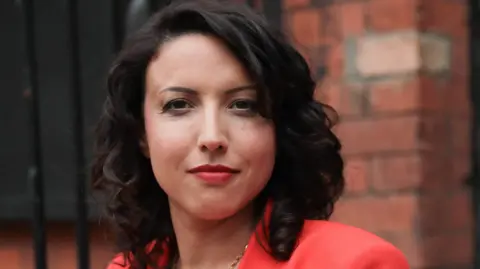Business reporter, BBC News
 Mohaimon
MohaimonAlmost half of working-age adults are not paying into a private or workplace pension, the government revealed this week.
The self-employed, low earners and women are less likely to have their own pension – while only one-in-four people of Pakistani or Bangladeshi background have one.
The BBC spoke to some of those who do not have a workplace or private pension to find out why.
“I am more worried about surviving day-to-day than worrying about the future,” says 29-year-old Mohaimon.
Originally from Bangladesh and now living in London, he gets work in the hospitality sector as and when jobs come up.
He worked in retail during university and was auto-enrolled in a pension scheme -but when he realised he couldn’t use the money until he retired, he stopped it.
“The whole dream of having a good job and paying in to a pension doesn’t feel like it applies to me,” he says. “A lot of my financial decisions are survival based – that’s my reality.”
He adds: “Even if I do get a good job with good pension benefits, I’d rather save for a deposit for a house. I’ll try to get £30k – £50k in my bank account. I think that’s more important than anything else.”
‘I need to cover my daily expenses first’
 Saira Amir
Saira AmirSaira Amir, 46, is a self-employed stylist working in Norfolk. She says if she could afford to save for a pension she would – but she struggles to cover her daily expenses.
She has three children aged 21, 20 and 11 who all live at home with her.
“Being self-employed in this job is risky,” she says. She would like to open her own salon, but says it’s a huge cost she can’t afford yet.
The single mother gets universal credit – a benefit payment for working age people.
But she says it covers groceries and £5 a day bus fares to get to clients and “isn’t enough” to save for a pension too.
Saira adds that in previous generations of her Pakistani family, parents would have relied on children to look after them in their retirement, but that with her children, “I don’t know their mindset” so she isn’t expecting the same.
State pension
Those without a private or workplace pension may have to rely on the state pension.
In general, you need 35 years of qualifying National Insurance contributions to get a full state pension.
This is £230.25 per week, which equates to £11,973 per year in the 2025/26 tax year.
But the annual income needed for a minimum retirement living standard was £13,400 a year for one person and £21,600 for two, the Pensions and Lifetime Savings Association estimates .
For what it calls a “moderate” lifestyle, a single person would need £31,700 a year, while two people require £43,900.
For a “comfortable” retirement, it’s an annual income of £43,900 for one, and £60,600 for two.
Auto-enrolment pension
All employers must offer a workplace pension scheme to their staff, and automatically enrol those who fit certain criteria.
They include people who earn at least £10,000 a year per job, and are aged between 22 and state pension age. But not those aged under 22 and the self-employed.
Workers can opt out if they do not want to save. Otherwise, 5% of their earnings above £6,240 a year and a contribution from their employer worth 3% of earnings, is automatically saved into a pension pot.
The idea is to encourage saving for retirement from an earlier age, to top up the state pension in later life. It has been widely regarded a success since its phased introduction in 2012, with relatively few people opting out.
Those paying into a workplace pension also get tax relief on what they pay in.
“So, if you are a basic rate taxpayer who would have paid 20% income tax it means you get 20% tax relief on your pension contribution,” says Helen Morrisey, head of retirement analysis at Hargreaves Lansdown.
“This means that a £100 pension contribution would only cost you £80.”
She adds: “For a higher rate taxpayer who would have paid tax at 40% that £100 contribution would only cost them £60.”
‘I wish I’d started sooner’
 Victoria Olsena
Victoria OlsenaVictoria Olsena, 38, says she “barely knows anyone” who is saving for retirement.
“People should realise that the future is going to be terrible and they should do something about it,” she says.
Originally from Argentina and now a British citizen after several years in the UK, Victoria owns her own AI marketing consultancy earning £50,000 a year.
She pays in to a pension and an ISA and says she wishes she had started paying into a pension sooner.
Helen at Hargreaves Lansdown says: “Retirement may feel like a long way away and that can mean you prioritise other things for your money.
“But it is exactly this long-term drip feed of contributions going into your pension over time that really builds up its value.
“Getting to grips with it early will really help you as it can be hard to make up lost ground later on.”
Additional reporting by Connie Bowker and Kevin Peachey.
Source link
 Unews World
Unews World

